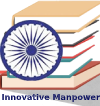Substantial organizational changes take place typically when organizations perceive a need to change the overall strategy and direction for success, adds or discontinues a major segment or practice, and/or wants to change the very nature by which it operates.
It also occurs when an organization evolves through its life cycles, and has to restructure itself to grow. Organizational change is often a response to changes in the environment. Some of the reasons prompting changes are −



